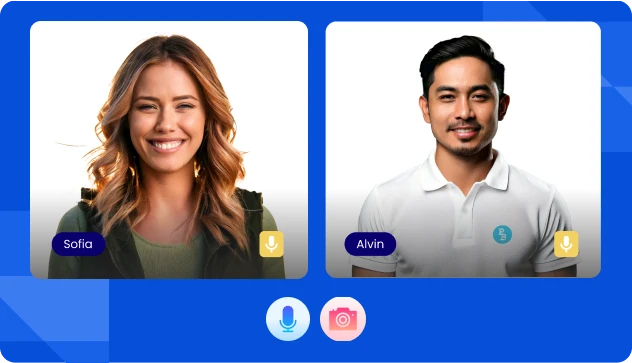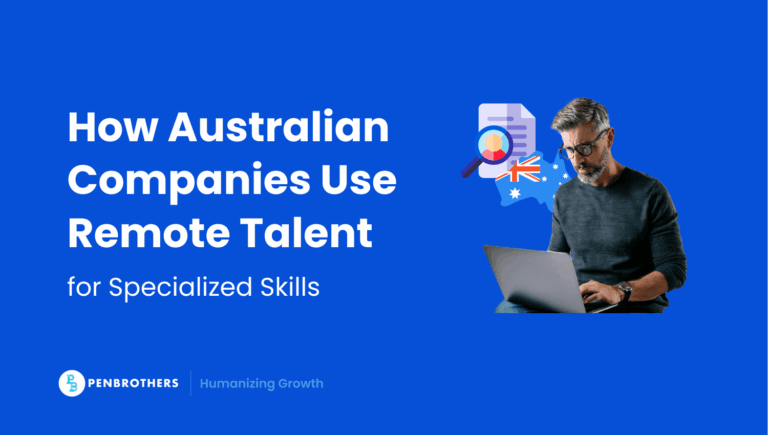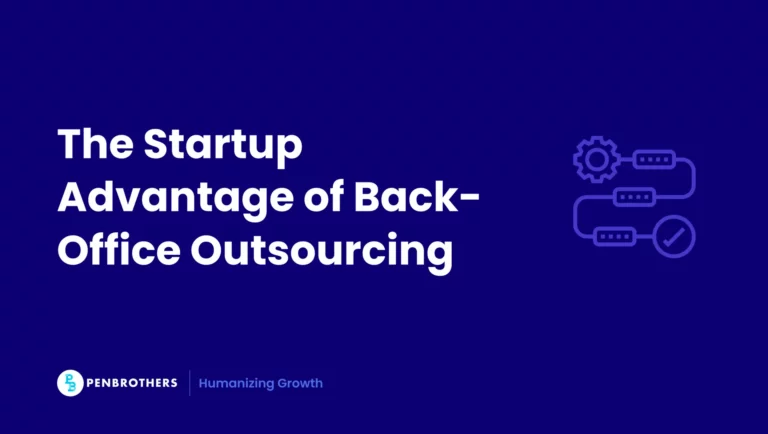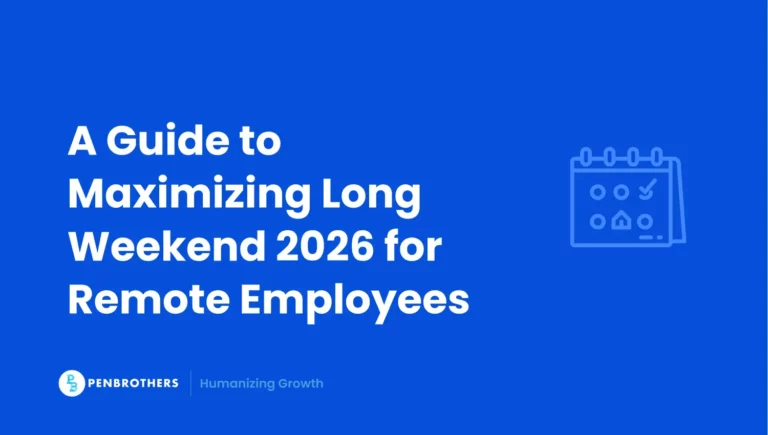Key Takeaways
- Onboarding is a system, not a welcome email. Offshore hires don’t just need access and paperwork, they need a structured runway from Day 1 that turns them into aligned, productive team members fast.
- Offshore roles amplify onboarding gaps. Distance, time zones, and lack of hallway conversations make misalignment more costly, so offshore onboarding must be more explicit, more documented, and more deliberate than local onboarding.
- Preboarding sets the tone. Getting contracts, equipment, tools, access, and expectations ready before Day 1 dramatically shortens time-to-productivity and signals to the new hire that your team is serious and prepared.
- 180 days beats 30/60/90. Penbrothers’ 3-phase, 180-Day Hypercare Framework (Foundation & Integration → Performance Alignment → Autonomy & Retention) shows that ongoing check-ins, coaching, and goal recalibration over six months reduce early failure and improve long-term retention.
- Structure + human touch drives retention. Clear KPIs, written expectations, scheduled check-ins, peer buddies, and visible recognition in company channels turn offshore talent from “remote staff” into fully integrated, loyal team members who stay and grow with the business.
Hiring offshore talent is a strategic move. But without a structured onboarding plan, even your best hire might underdeliver.
Offshore employees face unique barriers, time zones, communication norms, lack of face-to-face contact. If you want them to contribute meaningfully, you need more than a welcome email. You need a system.
That’s why Penbrothers created Hypercare Onboarding: a client-focused support program that ensures offshore talent is set up for success from Day 1 to long after Day 180.
What Is New Hire Onboarding?
Onboarding is the structured process of turning a new hire into a productive, aligned team member. It involves paperwork, training, communication, and culture.
For offshore roles, onboarding must also account for:
- Remote tool and IT setup
- Clear expectations in asynchronous work
- Cultural assimilation at a distance
It’s not just about what a hire needs. It’s about what your business needs from them and how to get there faster.
According to a Gallup study, only 12% of employees strongly agree that their organization does a great job of onboarding new employees. Poor onboarding can lead to disengagement and early turnover.
Why Offshore Roles Need a Dedicated Onboarding Checklist
When onboarding offshore hires, misalignment costs more. Delays are amplified. Friction becomes isolation.
A new hire onboarding checklist ensures consistency, accountability, and clarity. It helps:
- Speed up time-to-productivity
- Prevent early turnover
- Reinforce company culture from afar
According to SHRM, employees are 58% more likely to stay with a company for three years or more if they go through a structured onboarding program. Standardized onboarding also leads to a 50% increase in productivity.
Penbrothers’ Hypercare Onboarding: A Unique Client Support System
Unlike typical EORs or outsourcing providers, Penbrothers doesn’t leave onboarding to chance or leave it entirely up to your internal HR team.
We actively support you and your offshore hire through a proven, structured framework that we call Hypercare Onboarding, designed not just to integrate talent, but to elevate performance.
Here’s what makes it different:
- Preboarding support: We coordinate IT access, workspace setup, and onboarding tools before Day 1.
- Welcome kits: Clients can opt to send personalized kits, creating a warm, branded experience for offshore hires.
- Structured check-ins from Day 1 to Day 180: Weekly manager syncs in the first 60 days, bi-weekly reviews from Days 61–120, and monthly performance check-ins through Days 121–180 to ensure alignment, coaching, and continuous improvement.
- Coaching and alignment: Our Account Managers support both the talent and the client to ensure clarity on goals, workflows, and expectations.
- Support continues beyond Day 180: We don’t “handoff” the hire, we stay involved, ensuring smooth transitions, role expansions, or replacements if needed.
Why does this matter?
Because remote onboarding requires special care. Early misalignment can spiral into long-term disengagement or even early turnover.
With Penbrothers’ Hypercare Framework, you’re not guessing whether your offshore hire is succeeding, you’re seeing it, supporting it, and scaling it.
General New Hire Onboarding Checklist for Offshore Roles
Onboarding offshore talent requires more than sending a welcome email. From preboarding to performance check-ins, every step shapes how quickly and confidently a new hire ramps up. Use this checklist to ensure no detail is missed, especially when your team is remote, distributed, or scaling fast.
Preboarding Checklist
Set your offshore hire up for success before Day 1:
- Send the job offer and collect signed documents
- Share welcome email with:
- Start date and manager details
- What to expect on Day 1
- Company mission and values
- Assign an onboarding buddy or peer mentor
- Provide calendar invites for onboarding sessions
- Ship equipment (laptop, headset, etc.)
- Set up work accounts (email, Slack, HRIS, tools)
- Grant access to shared drives and key resources
- Confirm completion of required documents:
- ID verification, tax forms (as applicable)
- Emergency contact form
- Employee handbook acknowledgment
Make expectations unmissable, start with a strong role description tailored for offshore success.
Orientation Checklist
Build early alignment on company culture, tools, and compliance:
- Host live or async orientation session
- Introduce company values, structure, and culture
- Explain benefits and compliance protocols
- Walk through essential tools and systems
- Provide role clarity and success metrics
- Review key policies:
- Data security
- Communication etiquette
- DEI and accessibility
- Arrange team introductions or a virtual meet-and-greet
- Share org chart and internal FAQs
- Encourage social connection through peer chats or channels
Training and Role Alignment Checklist
Reinforce expectations and support skill ramp-up:
- Provide SOPs, role-specific manuals, or knowledge base access
- Assign training modules or shadowing sessions
- Clarify KPIs and immediate deliverables
- Schedule weekly manager syncs during first month
- Deliver product or service onboarding (if applicable)
- Align tools with role needs (CRM, analytics, design tools, etc.)
- Share example work and performance benchmarks
- Invite new hire to key project channels or meetings
Want to align on what “great” looks like? Use this performance evaluation template to set clear benchmarks.
Penbrothers’ 180-Day Hypercare Framework
Most teams don’t fail because of talent. They fail because the first six months are unmanaged. The updated 180-Day Hypercare Framework fixes that by giving offshore hires a clear, structured runway from Day 1 to Day 180, ensuring they’re aligned, supported, and performing consistently.
Where most companies stop at 30/60/90-day check-ins, Penbrothers extends support to a full six months. This reduces early failure risk, accelerates productivity, and strengthens long-term retention.
Here’s how the new framework works.
Phase 1
Foundation and Integration
Goal: Build clarity, confidence, and workflow readiness.
This phase sets the tone for the entire offshore experience. Hires get the tools, structure, and guidance they need to do real work, not just orientation.
What happens:
- Complete role setup, tool access, and workflow alignment
- Weekly check-ins with managers
- Culture integration and team introductions
- Early performance review to catch misalignments early
This is where confidence is built and early habits are formed.
Phase 2
Performance Alignment
Goal: Strengthen collaboration and push toward consistent output.
Once the foundation is solid, the focus shifts to improving speed, accuracy, and team synergy.
What happens:
- Bi-weekly performance reviews
- Workflow optimization and SOP reinforcement
- Goal recalibration based on actual outputs
- Cross-team collaboration strengthening
This phase ensures hires are not just meeting expectations, but performing with consistency.
Phase 3
Autonomy and Retention
Goal: Build independence, ownership, and long-term engagement.
By this stage, the hire should be moving from “supported contributor” to “self-managing performer.”
What happens:
- Monthly performance reviews
- Career development and skill expansion plans
- Long-term goal setting
- Transition to independent work and accountability
- Retention checkpoints and coaching
This transforms offshore hires into fully integrated, reliable team members who understand their long-term path in the company.
The Outcome
By Day 180, companies get offshore hires who are:
- Fully integrated and aligned with company goals
- Consistently performing with minimal supervision
- Supported with clear growth paths and development plans
- Set up for long-term success and retention
This six-month system ensures offshore teams don’t just start strong—they stay strong.
Best Practices for Offshore Onboarding
Here’s what the most effective global teams do:
- Set clear, written expectations early
Offshore hires can’t rely on hallway conversations or in-person cues. From day one, document KPIs, communication norms, and what success looks like in their role. This reduces ambiguity and accelerates ramp-up. - Use video for async personal touch
Pre-recorded welcome messages from founders, team intros, or product overviews give offshore talent context and connection on their own time, across any timezone. - Over-communicate in the first 30 days
Assume nothing is obvious. Frequent manager check-ins, onboarding status reviews, and tool usage confirmations help catch small issues before they become real problems. - Share wins and recognition publicly
Reinforce inclusion by celebrating offshore contributions in company-wide channels. Recognition helps remote hires feel seen and valued. - Encourage peer mentorship, not just manager check-ins
Assign onboarding buddies or cross-functional mentors. This creates social connection, accelerates knowledge transfer, and decentralizes support.
When you design onboarding with offshore realities in mind, structured, human, and ongoing, you set the foundation not just for productivity, but for loyalty and long-term growth. Not sure how to structure onboarding across time zones? This step-by-step timeline can guide your remote onboarding process.
Download: Offshore New Hire Onboarding Checklist
Want to make this process plug-and-play? Download our editable checklist to build a smoother, more strategic onboarding experience for your offshore hires.
Offshore New Hire Onboarding Checklist
At Penbrothers, we don’t just fill roles, we help you onboard with confidence. From preboarding to post-Day 90 check-ins, our Hypercare Onboarding Framework supports your team every step of the way.
Because onboarding isn’t just an HR task. It’s how you protect your investment and scale faster with the right people. We can help!
Frequently Asked Questions (FAQs)
It requires more intentional structure. Since you can’t rely on in-person cues, offshore onboarding needs clearer documentation, defined communication rhythms, and explicit alignment on tools and expectations.
Most teams use 30/60/90 days, but offshore roles benefit from a longer runway. A 4–6 month arc helps new hires fully align with culture, workflows, and performance.
Use overlapping hours for key check-ins, then rely on async tools, recorded videos, written SOPs, and shared docs, to keep onboarding moving even without real-time interaction.
A simple but consistent stack works best: an onboarding hub, project management tool, communication platform, and a system for performance check-ins.
Start with the basics: define success for the role, outline the first 90 days, document key processes, and assign a single point person. You can refine it with each hire.






